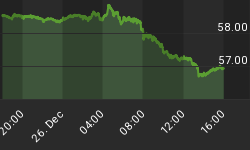12/10/2010 9:21:35 AM
The bank indexes confirmed their move higher driving financials which drove the broader market higher...
Recommendations:
Take no action.
Daily Trend Indications:

- Positions indicated as Green are Long positions and those indicated as Red are short positions.
- The State of the Market is used to determine how you should trade. A trending market can ignore support and resistance levels and maintain its direction longer than most traders think it will.
- The BIAS is used to determine how aggressive or defensive you should be with a position. If the BIAS is Bullish but the market is in a Trading state, you might enter a short trade to take advantage of a reversal off of resistance. The BIAS tells you to exit that trade on "weaker" signals than you might otherwise trade on as the market is predisposed to move in the direction of BIAS.
- At Risk is generally neutral represented by "-". When it is "Bullish" or "Bearish" it warns of a potential change in the BIAS.
- The Moving Averages are noted as they are important signposts used by the Chartists community in determining the relative health of the markets.
Current ETF positions are:
In cash.
Daily Trading Action
The major index ETFs opened higher and then began to immediately sell-off through the morning session. That intraday low just prior to noon turned out to be the bottom as the major indexes fought their way higher through the afternoon to eventually all finish in positive territory. The runaway leader was the S&P-500 with the lift in financials proving sufficient to ensure outperformance. Helping financials to outperformace were the Bank Index (KBE 25.05 +0.61) which soared two and a half percent and the Regional Bank Index (KRE 24.91 +0.24) rose one percent. The Russell-2000 (IWM 76.79 +0.26) added a fractional gain with a big drop in the final minutes of trading erasing much of the intraday gains. The Semiconductor Index (SOX 416.40 +0.97) posted a small gain similar to the major indexes. The 20+ Yr Bonds (TLT 93.72 +0.46) posted a gain of nearly one half of one percent but remains below the imported Nov 15th low. A failure to retake this level suggests a continued move lower for 20+ year bond prices. NYSE volume was below average with 1.010B shares traded. NASDAQ volume was average with 1.924B shares traded.
There were three economic reports of interest released:
- Initial Jobless Claims for last week came in at 421K versus an expected 429K
- Continuing Jobless Claims came in at 4.086M versus an expected 4.240M
- Wholesale Inventories (Oct) rose +1.9% versus an expected rise of +0.7%
The first two reports were released an hour before the open and contributed to a rise in futures markets. The last report was released a half hour into the session.
The U.S. dollar closed essentially flat again with Thursday's trading see an intraday move higher into late morning that collapsed into the close.
Eight out of ten of the economic sectors in the S&P-500 rose led by Financials (+1.3%). Consumer Discretionary and Tech were unchanged.
Implied volatility for the S&P-500 (VIX 17.25 -0.49) fell nearly three percent and the implied volatility for the NASDAQ-100 (VXN 19.06 -0.64) fell more than three percent. This left the VIX at a new low not seen since prior to the beginning of the late April swoon that was the last significant collapse for the major indexes. The VXN has moved closer to its recent closing low (18.67 achieved on Nov 5th).
The yield for the 10-year note fell two basis points to close at 3.22. The price of the near term futures contract for a barrel of crude oil rose nine cents to close at $88.37.
Market internals were positive advancers leading decliners 5:4 on the NYSE and by 7:5 on the NASDAQ. Up volume led down volume by 5:2 on the NYSE and by 9:5 on the NASDAQ. The index put/call ratio rose +0.05 to close at 1.26. The equity put/call ratio fell -0.06 to close at 0.43. The level of complacency remains extreme.
Commentary:
Thursday's trading saw a higher open and a failure to be able to hold that price. Even the afternoon rally was unable to close the gap with the Dow and NASDAQ-100 closing essentially flat while the S&P-500 owed its gains to the torrid rise in the bank indexes. That rise, although not yet signaling a top, has been extended and financials are currently overbought. The move back above the 200-Day Moving Averages (DMAs) on Wednesday put bank investors in a different mindset.
We are looking for a significant move in either direction to allow us to enter a trade but don't know yet, which direction that will be. There is a potential to break out and run higher with overhead resistance very close. On the other hand, a break down to the 20-DMA is possible, in which case we would want to get long for a Santa Claus rally. We remain in cash for another day.
















